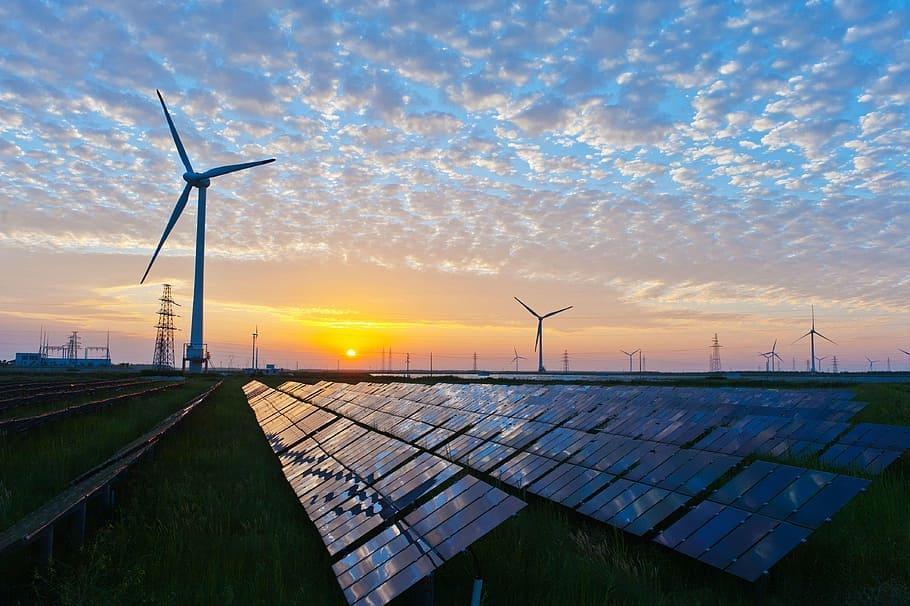Solar Energy Myths and Facts
Today we are busting some of the most common solar energy myths and facts.
The demand for solar power is increasing to mitigate the consequences of global warming that our ecosystem is experiencing as a result of growing pollution. We are surrounded by a plethora of renewable energy sources, particularly solar power, which may be used all year. Even if this is true, there is still some uncertainty about the advantages of solar power. It’s time to put an end to the cynicism about solar power and improve its prospects for the future. Solar power is a rapidly developing field and there are many solar power myths and facts. Many arguments against solar power are based on outdated or incorrect information.

Solar energy myth 1: Solar panels do not work in cold weather with snow or cloudy days
Fact: Solar panels can work in sunny, cold, or even cloudy environments. Solar panel technology allows them to work efficiently and more efficiently in colder temperatures than warmer temperatures. In addition, cloudy weather will not inhibit the efficiency of solar panels; they can be a viable source of electricity because they can still generate enough electricity. Even on a cold, sunny winter day, it can generate electricity equivalent to that produced by a hot summer day. Examples of countries where these systems are efficient are Germany (the world leader in solar panels), the United Kingdom, China, and Italy.
Solar energy myth 2: Solar power is too expensive and uneconomical
Fact: If we look at the numbers from 2009 to 2021, as solar panels become cheaper and cheaper, investment in solar panels has generally been on the rise. Their average cost was reduced by approximately 30%. On a global scale, solar power generation is actually cheaper than coal-based power generation.
Solar energy myth 3: Solar power installation is quite complicated and requires a lot of maintenance
Fact: It is relatively easy to install solar panels as long as you choose a reliable manufacturer. Ideally, if your system is connected to the public grid, which is common in power systems, then it will make the solar panels easier to maintain. Simply clean the solar panels with water to remove accumulated dust, debris, or snow. Solar panels are built in such a way that they can withstand harsh weather conditions such as hail.
Solar energy myth 4: Solar panels can damage the roof
Fact: Solar panels actually protect and preserve the section of the roof that they cover. Because the panels are not directly affixed to the roof, they may be readily removed if the roof they are sitting on is damaged and needs to be repaired. They’re just affixed to the top of it. When there are gaps between the roofs and the panels, sealant is usually applied to fill them. Furthermore, the mounts are shielded by a metal “flashing” or covers that provide an additional layer of protection. Always double-check your roof for damage before installing a new roof top.
Solar energy myth 5: Using solar panels will make it more difficult to resell your home
Fact: Solar panels will actually increase the property value of your house. Many studies have found that homes with solar panels sell faster than homes without solar panels. Although the cost of solar panels ranges from $3,000 to $5,000, you can ultimately save in the long run because they increase the value of your home by an average of $14,000, but it all depends on its value.
Solar energy myth 6: The price of solar panels depends on the size of your home
Fact: Solar panels are designed to meet the specific needs of each homeowner. When determining the cost of installing solar panels, pay special attention to the direction and slope of your roof. In addition, the surrounding area of the roof will be considered during installation to ensure that it is located in an area that is easy to get sunlight and is not blocked by surrounding trees or buildings.
Solar energy myth 7: If clean coal can be used, why invest in solar energy
Fact: Solar energy is a cleaner energy source than coal because coal is not really clean. Coal is one of the dirtiest fossil fuels due to the blasting of mountaintops and the creation of a lagoon of black slurry in its route, coal mining is responsible for a variety of health issues. The more coal we burn, the more harm we cause to the environment as it increases mercury and smog levels, as well as carbon pollution, resulting in more harmful environmental repercussions.
Solar energy myth 8: Solar panels are harmful to the environment after they are exhausted
Fact: Solar panels, on the other hand, are designed to last a maximum of 25 years before being recycled. This is dependent on the solar panel manufacturer you choose, but determining whether they will be recycled is difficult because most solar panels are still functional. Furthermore, some manufacturers will recycle them for you at no cost.
This concludes the top 8 solar energy myths and facts.
